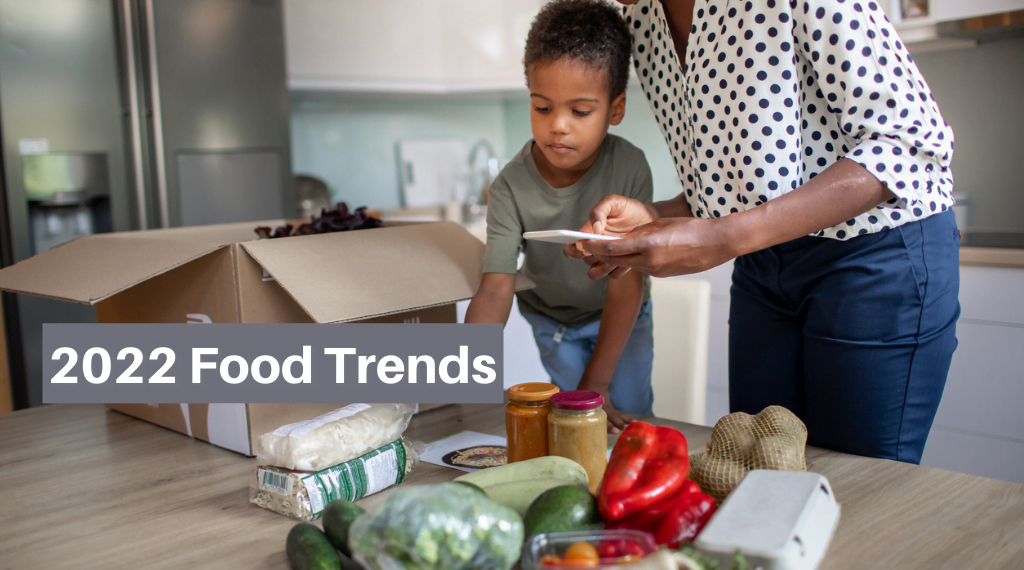As we enter the new year and the world begins year three of the COVID-19 pandemic, we find ourselves in a decade that proves the adage, “The only constant is change.” The food system is hardly immune to turmoil.
The causes and consequences include persistent disruptions in global supply chains, new perspectives on worker welfare and safety, and a renewed focus on food insecurity. In addition, climate change continues to be a major concern. Despite these challenges, innovative approaches that harness the power of science and technology continue to emerge.
To help make sense of it all, the International Food Information Council (IFIC) — drawing on its credentialed experts and wealth of consumer survey data — once again offers a forecast of food trends for the upcoming year.
Well, Well, Well…ness
Unsurprisingly, the pandemic lockdowns for many Americans marked a period of food indulgence and dietary backsliding. But IFIC data also suggest that wellness is becoming a watchword for many of us. Our recent surveys show that consumers are proactively looking for positive food attributes like whole grains and fiber, and they’re exploring immune health more so than previously.
What’s more, messages about healthy diets might be sinking in. IFIC’s annual Food and Health Survey has found that awareness of the federal Dietary Guidelines for Americans has doubled over roughly the past decade, with 46% of consumers saying in 2021 that they know at least a fair amount about them, compared to just 23% in 2010.
But the pandemic also revealed a precarious state of food insecurity for many Americans, where a startling number of people live a single economic shock away from hunger and deprivation — and children are hit the hardest. Consequently, we might expect more attention in 2022 from policymakers on issues like federal feeding programs, the need to act on health and nutrition disparities, and the role of lifestyle-related noncommunicable diseases — including the links between comorbidities and overall susceptibility to COVID.
In 2022, Americans also will broaden their horizons in search of more effective ways to manage their stress, whether it be their pursuit of micronutrients like B vitamins and magnesium or macronutrients like whole grains and protein. CBD-infused foods will move even closer to center stage. And we will likely manage our diets and nutrition through beverages, such as broader consumption of non-alcoholic alternatives as a way to reduce caloric intake or so-called “functional fizzes.”
Yearning for Yesteryear
“Nostalgia” has its roots in Greek words that describe the pain of missing one’s home. In 2022, the 1990s will make a return trip… and they will bringing some familiar favorites with them. In the coming year, all things simple and familiar will guide our food choices, whether it’s the recipes we follow or the snacks we reach for.
For example, the Food Network, which launched in 1993 and has been known for its down-home and sometimes decadent cuisine, has experienced a pandemic-era ratings renaissance. Expect its ethos of simple, no-fuss, home cooking to continue in 2022.
Fever for the Flavor
Given the current state of the pandemic, Americans who are still reluctant to travel in 2022 will look for new ways to transport their taste buds. Expect them to satisfy their gastronomical wanderlust with exotic foods and flavors like hibiscus, yuzu, turmeric, kelp, gochujang and ube.
Not only will they continue to savor the “fifth taste” of umami with ingredients like MSG, they will also become more acquainted with the richness of kokumi, considered by some to be a “sixth taste.”
They will look to reduce their sodium intake with salt alternatives like potassium chloride and their sugar intake with substitutes like allulose, maltitol and monk fruit.
Necessity Is the Mother of (Pandemic) Invention
Given the pandemic food system shifts, more and more businesses will “get into the spirit” of so-called ghost kitchens and pop-ups, as well as the greater adoption of technologies like QR codes for menus and self-service kiosks at restaurants.
E-commerce and direct-to-consumer sales will increasingly become a driving force in the food system, as policymakers rush to keep up. Urban farming and “vertical agriculture” will be a growth industry for city-dwellers that promote sustainability, nutrition, food security and closer, more personal connections to food production.
And CRISPR, already increasingly accepted for its medical applications, will assert itself as a leading next-generation biotechnology in crop production to help address food security, climate change and sustainability.
Sustainability “Cemented In”
In fact, Americans in 2022 can expect their conception of sustainability to broaden and its role in their attitudes and behaviors to become more firmly “cemented in.”
The 2021 Food and Health Survey found that 42% of consumers believe their food choices have a moderate or significant impact on the environment, while 7 in 10 say climate change sometimes influences their purchase decisions.
The recent United Nations Climate Change Conference (“COP26”) will contribute to sustainable purchasing attitudes in the coming year. And environmental sustainability as a consumer value will help fuel new eating patterns like “reducetarian,” “climatarian” and low-carbon.
But consumers’ support for sustainability will extend beyond the physical environment and into social issues. More than half of consumers believe it is at least somewhat important that people working in food production, retail and foodservice be treated fairly and equitably. Support for “social sustainability” is only expected to grow, as it has found particular resonance among younger consumers.
Suffice it to say that if past is prologue, regardless of which predictions and prognostications you choose to believe, 2022 will once again teach us a basic lesson: to expect the unexpected.
